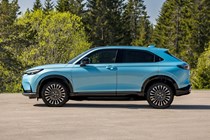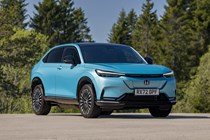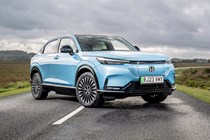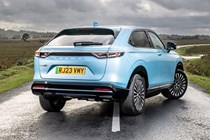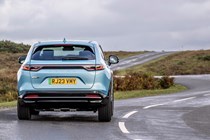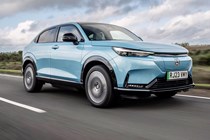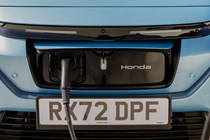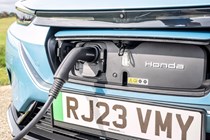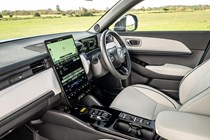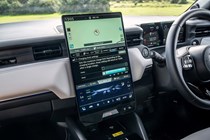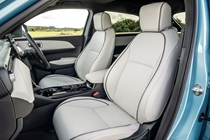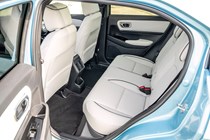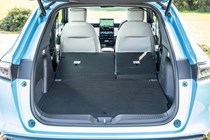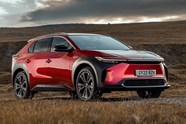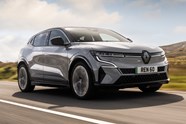
Honda e:Ny1 review
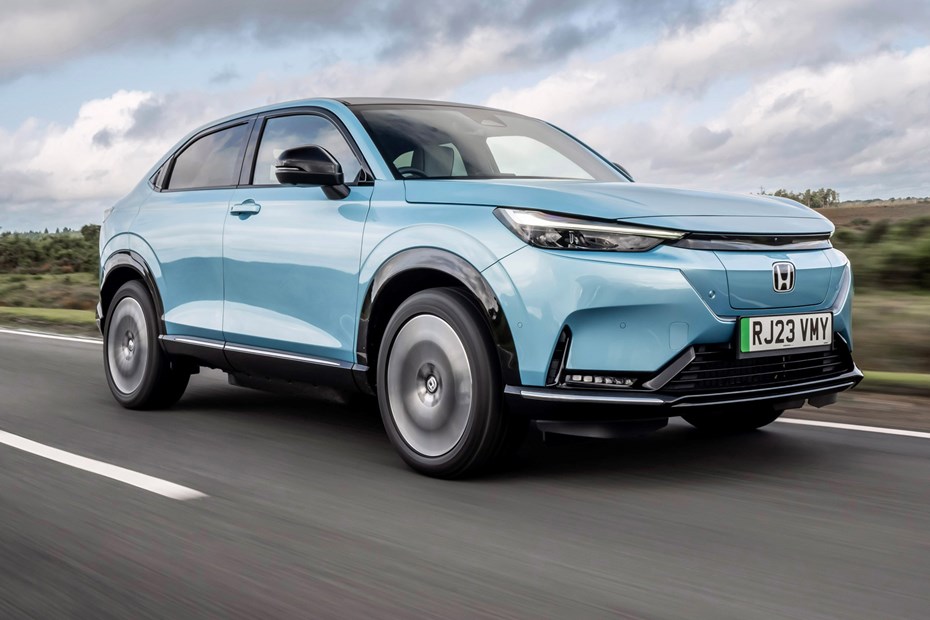
At a glance
| Price new | £40,005 - £42,205 |
|---|---|
| Used prices | £18,525 - £25,520 |
| Road tax cost | £195 - £620 |
| Insurance group | 39 - 40 |
Get an insurance quote with

|
|
| Fuel economy | 3.4 miles/kWh |
| Range | 256 miles |
| Miles per pound | 5.4 - 10 |
| Number of doors | 5 |
| View full specs for a specific version | |
Available fuel types
Fully electric
Pros & cons
- Reasonable passenger space
- Lots of standard equipment
- Often discounted
- Driving range isn't great, charging speeds are slow
- Some quality issues in our experience
- Small boot limits practicality
Honda e:Ny1 SUV rivals
Overview
It seems crazy at this point in the 21st century, but the Honda e:Ny1 is only the second electric vehicle (EV) the Japanese manufacturer has ever sold in the UK. Following on from the cute but compromised (and comparatively expensive) Honda e city car, the e:Ny1 is intended to have much broader appeal – hence the electric: anyone naming shenanigans and popular SUV form-factor. It is however, very far from being one of the best electric cars available, for reasons this review will explain.
In fact, the e:Ny1 doesn’t even get anywhere near to our list of the best electric SUVs, let alone the overall EV leader board. It’s held back by a limited driving range, lack of passenger space and, in our experience, a surprisingly poor quality feel to its engineering. We say surprising because Honda has always prided itself on being an engineering company first and foremost, but the e:Ny1 seems to exhibit a real sense of ‘do we really have to build an electric car?’
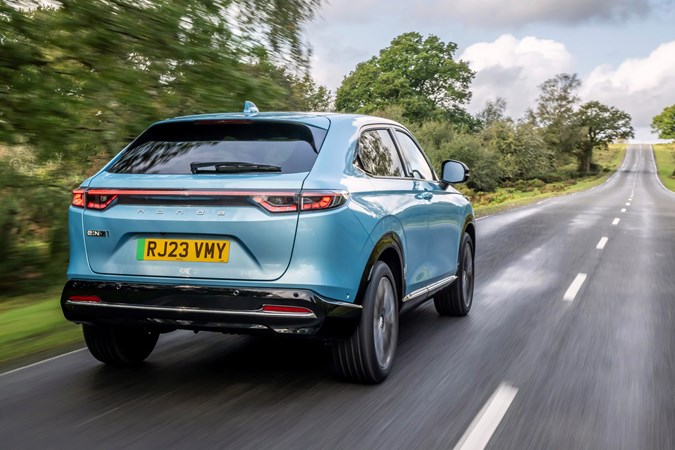
Examples of this apparent lack of interest on our most recent e:Ny1 test car (July 2024) include a whining noise when steering was applied at low speeds and a strange intermittent shuddering on start-up and shut down – something this writer has never experienced in an electric vehicle before. You can find out more about how we test cars at Parkers on our dedicated explainer page.
Given this, it’s important to understand that there are plenty of better, similarly sized electric SUVs available. Established rivals range from budget bargains such as the MG ZS EV through to more premium alternatives such as the Volvo EX30, with other alternatives worth considering including the Jeep Avenger EV, Hyundai Kona Electric Renault Megane e-Tech, and Vauxhall Mokka Electric. We’d even take a Toyota bZ4X over the Honda, and that’s not especially good, either. No wonder you’ll regularly find large discounts on the e:Ny1 without too much searching.
What’s it like inside?
Despite looking very similar to the hybrid-powered Honda HR-V, the only major components the two cars share are their doors. The difference is even more obvious on the inside, where the HR-V’s conservative, rather traditional interior is completely usurped by the e:Ny1’s tech-forward approach, characterised by an enormous 15.1-inch central touchscreen.
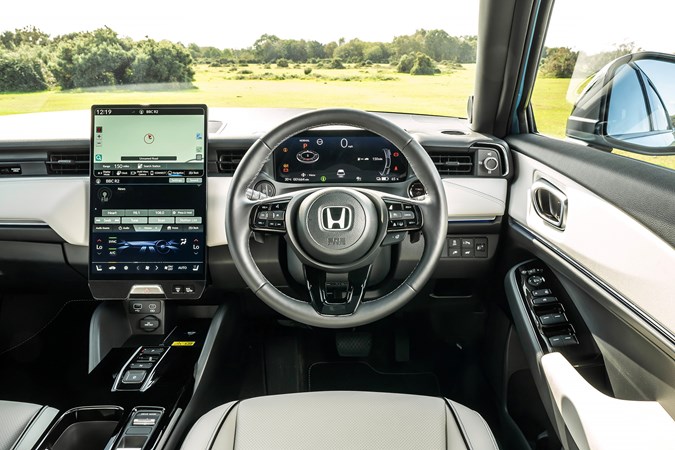
This is split into three sections, and is relatively easy to navigate as a novice. If you’ve used a smartphone, you’ll probably get on okay with this, especially as you can opt for Android Auto and Apple CarPlay interfaces in place of Honda’s native infotainment software. However, we found a number of the connected features – such as a nearby charger location service – simply didn’t work. Perhaps it just needed setting up properly (a subscription is involved) but this isn’t a good experience if you’re trying to get to grips with keeping your new EV moving, especially given the prominence of this facility on the display.
Given the size of the screen, you won’t be surprised to learn that almost all of the interior controls are integrated into this panel. And although the heating and ventilation has its own dedicated section at the bottom, this is fiddly to use, especially while driving. The contrast to Honda’s nicely laid-out regular cars with their physical buttons couldn’t be more stark.
There’s a reasonable amount of space in the front and good legroom in the rear. But the rear door openings are quite small and we found it quite awkward to get a child seat inside – the Isofix mounting points are harder to access than in some other Hondas, too. The 10.2-inch digital instrument display ahead of the driver is easy enough to understand, but was also noticeably wonky in our most recent test car.
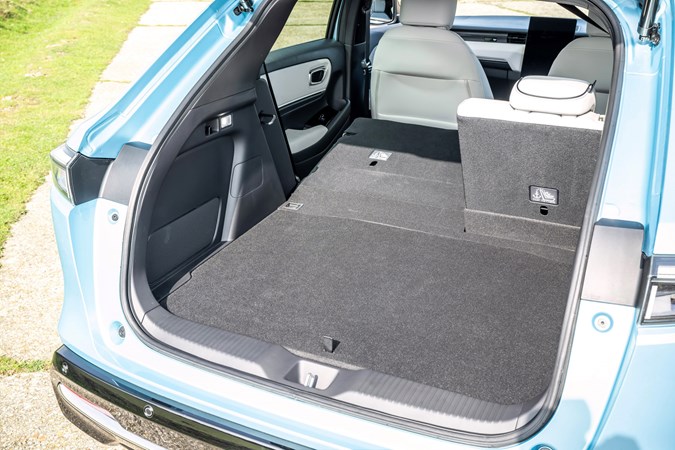
Trade-off for the passenger space is the small boot, which offers just 361 litres of space with the seats in place – less than many electric rivals. You can stash the charging cables under the floor, but Honda hasn’t thought to include any way of locking this floor in the upright position, so you have to hold it in place with one hand and grab the (heavy) cable with the other. Similarly, the floor seems to routinely fall off its supports and collapse into the bottom of the boot.
What’s it like to drive?
As with most electric cars, the e:Ny1 is very simple to drive. There are no gears, so you only need to select D (for drive) or R (for reverse) via the centre console and get on with it – potentially after ignoring the various odd juddering and electrical noises when you start the car then turn the steering.
Paddles on the steering wheel allow you to adjust the strength of the regeneration function when you release the accelerator – the amount of energy the system tries to recover when you slow down. There are four settings, and the higher you go the more the e:Ny1 decelerates when you lift off. It falls short of being a one-pedal driving experience, however, so you’ll still need the brakes to come to a complete halt.
Unless you’re in the Sport driving mode, the regen level also resets itself, which may not suit drivers who don’t want to actively manage this process since its the very embodiment of inconsistent response. For what it’s worth, we don’t mind this so much, as it’s more efficient to have reduced regen when cruising along and the auto-reset stops you from forgetting to action this.
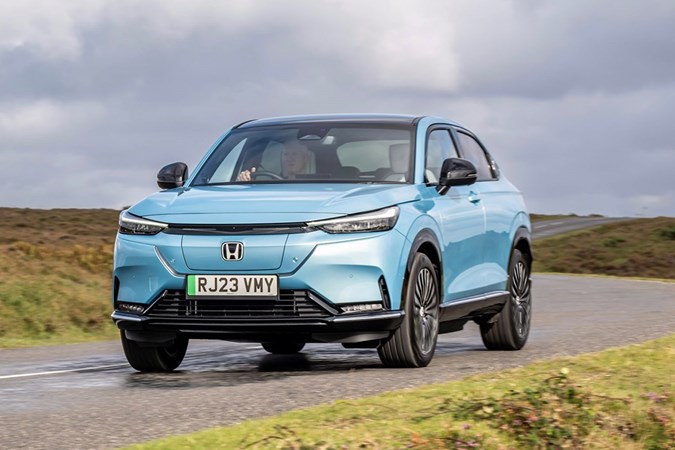
Acceleration at town speeds is nippy, thanks to the way the electric motor gives you lots of instant torque (pulling power). Plus, the 204hp rating is among the more generous in this class of electric car. It will cope with motorway journeys without difficulty, but you will use the battery up quite quickly on faster roads – we’ll go into this in more detail in the range and charging section below.
The steering is light, which makes the e:Ny1 feel fairly effortless. But there’s not much feedback and, in quicker corners, it can start to feel a little remote. The ride is annoyingly brittle as well, being unsettled easily and a touch too firm for our family car tastes.
Overall, while it is easy enough to drive, it’s never especially pleasant. There are much better EVs out there, especially if you sometimes want to cover longer distances.
Range and charging
According to the official WLTP figures, the Honda e:Ny1 has a maximum driving range of 256 miles. But in our experience it’s not very efficient in the real world, managing only around 2-3.5 miles per kilowatt hour (kWh) of battery capacity. Even with a 68.8kWh battery pack, this can be rather limiting.
In mixed driving, this means not expecting much more than 200 miles per charge in good weather and much less than that in winter. At motorway speeds we found ourselves getting nervous about covering 170 miles at a stretch – you’ll certainly want to be sure about accessible charger locations on longer trips.
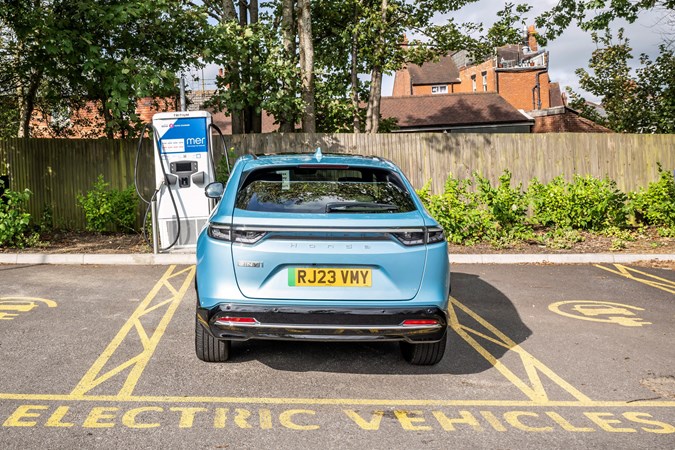
The battery’s maximum charging speed isn’t especially impressive by modern standards, either. Theoretically, going from 10 to 80% should take around 45 minutes on a suitably powerful public charger – something many other electric cars now manage upwards of 15 minutes quicker. In practice, we’ve found charging speed even slower than that.
On a typical 7kW AC home charger or wallbox, a full charge should take 8-9 hours. Just about feasible overnight.
What models and trims are available?
The Honda e:Ny1 doesn’t have a broad model range: there is just the one powertrain and two trim levels.
The Elegance specification starting point is well equipped, though, which helps to explain the comparatively expensive pricing – it comes with more stuff than most entry-level rivals. For instance, the big infotainment screen is standard, along with digital instrument display, electrically adjustable heated front seats, keyless entry and start, and wireless phone charging.
The higher specification e:Ny1 Advance model includes such extras as a large panoramic sunroof, heated steering wheel and automatic parking.
Click through to our verdict to see if we think you should buy Honda’s electric SUV.



